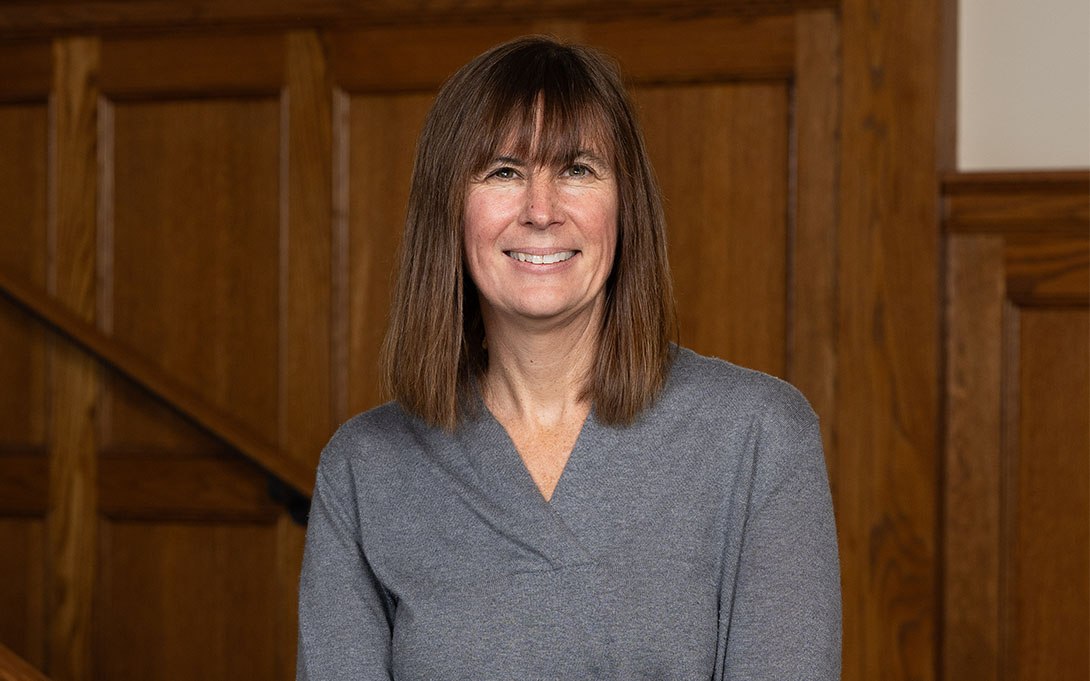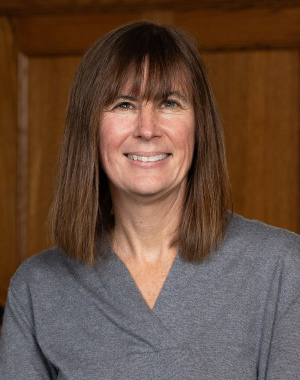
Sociologist Pamela Herd joined the Ford School faculty in September 2024 as the Carol Kakalec Kohn Professor of Social Policy. Her research focuses on inequality and how it interacts with policy issues including health, aging, and administrative burden. She is especially interested in how bureaucratic obstacles shape and further reinforces inequality.
Herd is the co-director of the Better Government Lab, an initiative that examines technological and other interventions to improve access to the social safety net. Her efforts have influenced state and federal policy reforms, including recent executive orders by the Biden Administration. A respected voice on these issues, she frequently contributes to prominent media outlets such as the New York Times, Washington Post, Slate, NPR, and the PBS NewsHour.
An authority in survey research and biodemographic methods, Herd serves as co-principal investigator for the General Social Survey and as an investigator with the Wisconsin Longitudinal Survey. Additionally, she chairs the NIH Data Advisory Board for the National Study of Adolescent Health.
In winter 2025, Herd will teach PubPol 770: policy analysis.
What types of research projects are you most passionate about and why?
The kinds of things I am excited about are research projects that have real world policy implications, the projects where we are evaluating different kinds of interventions to reduce burdens in public programs. In part, because once you have that research documenting the impact of those kinds of reductions, you can then use that to educate policymakers and policy practitioners about different options they have in a range of different venues about how to effectively reduce burdens.
How does your work around administrative burdens connect with your work around health and aging?
There are some really interesting overlaps. A lot of my work on the aging and health side has actually been about social determinants. So things like, How do policies impact health? A lot of the burden reduction projects, either directly or indirectly are getting at that.
I’ve recently analyzed data that shows improved access to the federal Supplemental Security Income (SSI) has real health implications. We found that when older adults had improved access to SSI, mortality decreased.
The funny thing about this project is that 20 years ago when I was a Robert Wood Johnson Foundation Health Policy Scholar here at U-M, I collaborated on a paper with Bob Schoeni and Jim House that examined the impact of SSI on health outcomes. It was the first project where I was making direct connections between policy and health. Jim House was my primary mentor while I was here, and he was just extraordinary. A lot of the things that I do now from survey research to thinking about how policies impact health very much have their origin in my work with Jim. The experience fundamentally shaped who I became as a researcher and scholar.
Figuring out why people struggle to access programs, it really does need to involve talking to them. When we are doing burden evaluations, we’re oftentimes designing surveys, designing and generating measures—skills that I’ve learned from doing survey research. The things that make it difficult for people to answer surveys that lead to low response rates, are all burdens as well. There is a lot of evidence in the survey literature about how to design a good question, how to communicate something clearly and succinctly. Often I’m sitting in a meeting talking about survey problems, and I’m thinking about policy burdens, and vice versa.
You help lead a longitudinal survey to understand health and well-being. What can longitudinal studies tell us that other research methodologies cannot?
Longitudinal data helps researchers understand how things play out over time. For example, if you reduce burdens to access in a program, the most obvious thing that happens is you give access to the benefits associated with that program. But we also want to understand the downstream impacts. If you increase access to food stamps for kids by making it easier for families to apply and receive those benefits, how does that impact those kids as they grow up? They have better nutrition throughout childhood because of food stamps, and we can see the long-term implications for their health and their well-being.
What do you hope students will take away from your policy analysis course?
I've taught policy analysis since I started teaching over 20 years ago. My objective for students is to learn how to think through and conduct a systematic analysis of different policies to address a basic social problem.
I help students define what they are trying to achieve, figure out the right analysis questions, and how to build and measure the evidence. In the way we're teaching it, students aren’t generating their own evidence. If you're working for a government agency or a nonprofit or a politician, a big part of that process is learning how to actually gather, accumulate, and think more holistically about existing evidence to figure out whether or not those different policies will help you achieve the goals that you've outlined.
It's really an applied class. It's really meant to give people real tools that they're going to go out and use in a lot of different workspaces.
What are you reading right now?
I love Elizabeth Strout. I recently read Tell me Everything. Typically her novels are set in Maine, which is by far one of my favorite places only after Michigan, of course. And then her characters are just really kind of quirky and charming, and a little bit odd. I love her characters.
